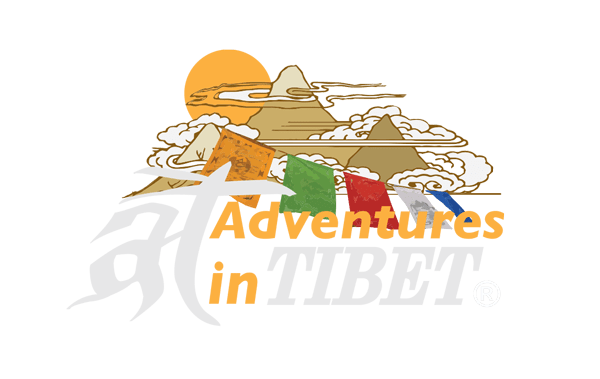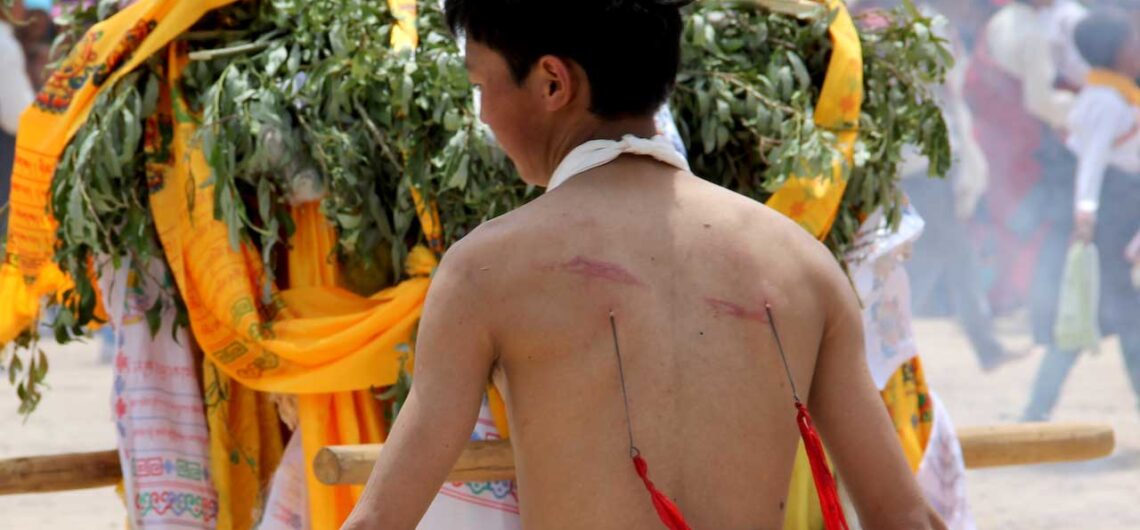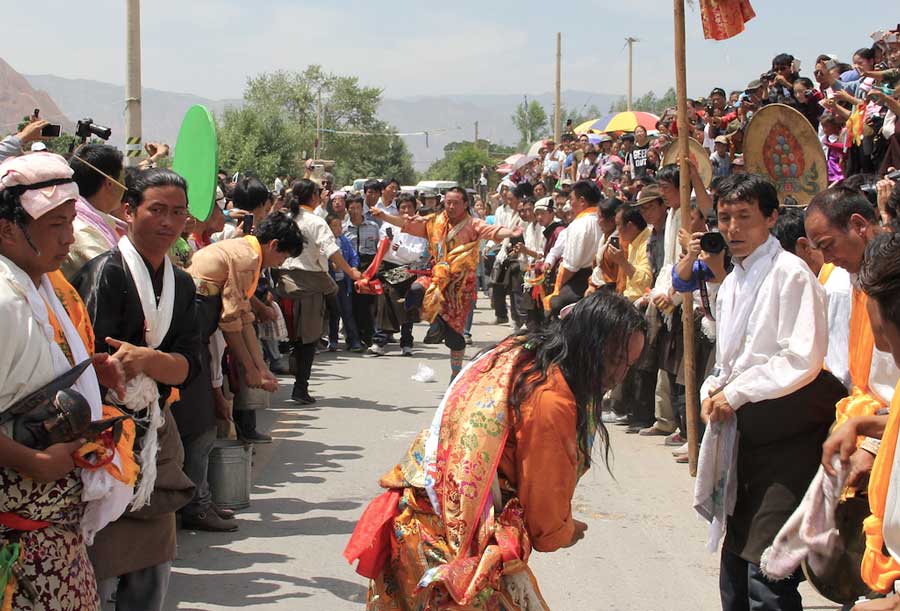Introduction to Tibetan Shamanism (དྲུག་པའི་ཀླུ་རོལ།)
Tibetan Shamanism, a folk religious practice with roots dating back over 1,400 years, is a unique and vibrant aspect of Tibetan culture. Known locally as Lurol (ཀླུ་རོལ་), which translates to “enjoying the Nagas” in English, it is celebrated annually from July 16th to 25th, according to the Chinese lunar calendar. This festival involves a variety of ritualistic practices, including worship of divinities, piercing of the skin (such as the cheeks and back), dancing, and playing the Naga’s drum.
One of the key elements of the Lurol festival is the participation of local youth, who often seek skin piercings from the oracle as a way to cleanse themselves of evil influences and obstacles for the coming year. The oracle, in a deep act of devotion, may also cut his forehead and offer his own blood to local deities, expressing profound faith and reverence.
Tibetan Shamanism primarily serves as a means of alleviating ailments, misfortunes, and droughts while promoting happiness and well-being for all sentient beings. The Lurol festival can be divided into three main types of dance: God Dance, Naga Dance, and Militant Dance. These dances are performed in rotation among the villages of Repkong each year and are considered crucial to both Tibetan culture and religion.
If you’re interested in experiencing the Tibetan Shaman’s festival, we can arrange a tailored tour to explore this unique cultural event in Amdo Tibet.
Examples of Lurol Activities in Popular Villages
Langgya Village Lurol
Langgya Village is home to the sacred Mt. Amnye Lhari and Mt. Amnye Mogkar, both revered as local deities. The village’s Lurol festival takes place from July 20th to 23rd, according to the agricultural calendar. The celebrations begin on the 20th with preparations such as displaying thangkas of the local deities on decorated poles and offering them with Kadags (ceremonial scarves).
On the 21st, a militant dance is performed on the hill where the local deity’s temple is located, followed by similar performances in both the upper and lower villages of Langgya. Naga dance is also incorporated into the day’s program.
The 22nd is considered the main day of the festival. Oracles from the two villages meet and perform a greeting dance. Both oracles cut their foreheads to offer their blood to the local deities, signifying their devotion and inviting the spirits of the deities into their beings. On the 23rd, the Naga dance is performed to pray for rain and ensure a good harvest. Finally, on the 24th, the thangkas of the deities are returned to the temple, marking the end of the festival.
Sakyi Village Lurol
Sakyi Village has the longest history of celebrating the Lurol festival, with Mt. Amnye Shachung revered as the village’s birth deity. The festival here takes place from June 16th to 19th, according to the Chinese calendar. On the 16th, men invite the local deity into every home in the village, blessing the residents.
On the 17th, the men climb to the top of the mountain dedicated to the local deity, offering incense and prayers, before returning to the temple where the deity resides. The villagers gather at the temple for a full day of dancing, including men’s dances, women’s dances, Azara dances, stilts dances, and Thugjee Chenpo dances (a circling dance performed by both men and women). These activities continue through the 19th. The festival concludes with the burning of a large incense offering to honor the local deity.
These vibrant and spiritually significant festivals offer a unique opportunity to witness the deep connection between the Tibetan people and their traditional religious practices. Whether in Langgya or Sakyi Village, the Lurol festivals are a testament to the enduring importance of Tibetan Shamanism and its role in both cultural and spiritual life.
Essential Internal & External Links That May Help You:
Chinese Visa Application | Tips for a Budget Tibet Tour | Plan a Successful Tibet Tour | About Us | Trekking Adventures | Our Office Direction | Plan a trip to Amdo | Festival Dates | Festival Tour | Tibet travel guide | Plan a trip Tibet | Saga Dawa Festival Tour | Shoton Festival Tour | Kailash Manasarovar Yatra Tour | Home |



Comments